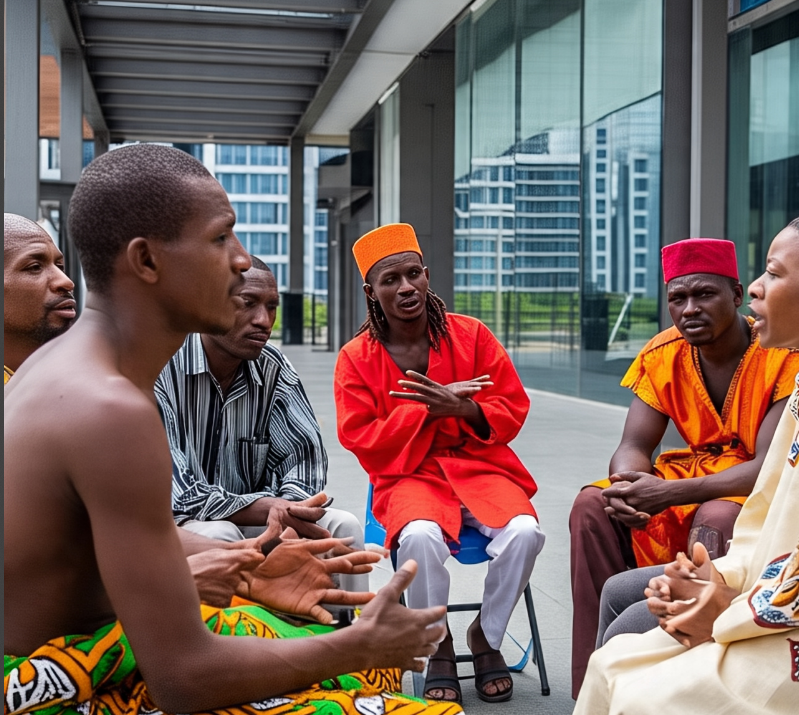Introduction to Sodziu: Meaning and Origins
The time period Sodziu holds a rich and layered importance, especially within the Lithuanian cultural and linguistic context. It originates from the Lithuanian phrase “sodžius,” which translates loosely to “village” or “countryside community.” Far more than only a geographical label, Sodziu encapsulates a manner of life that is deeply rooted in tradition, nature, and the rhythm of rural life. Historically, the Sodziu became a crucial a part of Lithuanian society, wherein network bonds had been sturdy, families have been intently knit, and seasonal cycles dictated each day residing. The time period nonetheless holds sentimental and cultural value, even in modern instances, symbolizing a slower pace of lifestyles, connection to the land, and a communal spirit frequently misplaced in these days’s city world.
Cultural Importance of Sodziu in Lithuanian Society
In Lithuania, the Sodziu has been tons greater than a bodily place; it’s an emblem of country wide identification, particularly for the duration of the centuries when Lithuanians had been under overseas rule. The rural village served as a safe haven for cultural renovation. Traditions like folks songs, dances, and the weaving of intricate styles had been all kept alive in these villages. The Sodziu additionally played a vital position for the duration of the Soviet era, when urban enlargement and collectivization threatened to erode neighborhood traditions. Rural communities banded together, not simplest to defend their houses and manner of life however additionally to maintain linguistic and spiritual practices. Even nowadays, cultural fairs frequently pay homage to the Sodziu manner of life, celebrating conventional apparel, local delicacies, and artisanal crafts that originated in those villages.
Sodziu Architecture and Traditional Living Structures
A defining characteristic of any Sodziu is its precise and practical structure. Traditional houses in the Lithuanian nation-state are usually wood, with steeply sloped roofs designed to bear the heavy snowstorm in iciness months. Many of these homes are adorned with carvings, symbolic embellishes, and awesome nearby decorations. The format of a Sodziu frequently consists of a vital square or communal vicinity, surrounded by way of homes, barns, and gardens. Living in a Sodziu way relying closely on self-sustainability—villagers develop their personal veggies, increase animals, and often make their own garb and tools. The structures aren’t only a testomony to realistic dwelling but additionally replicate a deep respect for nature and background. Even newer homes constructed in rural areas today regularly mimic this conventional style to keep the visible and cultural aesthetics of the unique Sodziu groups.
Life in a Sodziu: Traditions, Festivities, and Roles
The everyday lifestyles in a Sodziu is guided via both subculture and the sensible demands of rural residing. Each season brings its personal set of rituals and duties, from spring planting to autumn harvest fairs. These sports are regularly communal, with friends assisting every other and celebrating together once the work is achieved. Gender roles were historically nicely-described, with guys focusing on farming and construction, even as women tended to families, gardens, and crafts. However, those roles have advanced with time. Celebrations consisting of Joninės (St. John’s Day), Kūčios (Christmas Eve), and Velykos (Easter) are all steeped in village customs and are still broadly observed. These activities regularly function singing, dancing, and storytelling, and they play a important function in reinforcing social bonds and transmitting values from one generation to the following.
How Sodziu Influenced Lithuanian Language and Literature
The Sodziu has had a profound impact on Lithuanian language, idioms, and literary expression. Many Lithuanian proverbs and sayings originate from village existence, reflecting the values, humor, and realistic wisdom of rural communities. Famous Lithuanian poets and writers have drawn suggestion from the Sodziu, using it as a backdrop to specific themes of affection, hardship, identification, and resilience. For instance, the poet Maironis often evoked pastoral photographs and nation-state struggles in his verses. Additionally, folklore from Sodziu groups has contributed significantly to the country wide mythology and storytelling traditions. These memories frequently feature nature spirits, heroic villagers, and ethical training, imparting a shiny snapshot of the way deeply the Sodziu is embedded inside the Lithuanian linguistic and creative imagination.
Modern-Day Relevance of the Sodziu Concept
Despite the contemporary global’s tilt closer to urbanization, the essence of Sodziu keeps to thrive in various forms. Many Lithuanians nonetheless hold own family homes in villages, returning at some point of weekends or vacations to reconnect with their roots. These regions are more and more popular for eco-tourism and cultural retreats, supplying experiences in conventional cooking, farming, and crafting. The Sodziu represents a way of life that prioritizes balance with nature, minimalism, and true network dwelling—all values which might be resurging in popularity among more youthful generations seeking options to speedy-paced city lifestyles. Even in cities, humans are recreating the Sodziu spirit through community gardens, cooperative dwelling areas, and nearby cultural tasks. In a globalized society, the enduring enchantment of Sodziu underscores a deep human need for connection, heritage, and ease.
Sodziu and Sustainable Living Practices
One of the most compelling motives the Sodziu stays relevant these days is its inherent version of sustainable living. Traditional village existence turned into, by way of necessity, ecologically conscious long earlier than sustainability became a global fashion. Villagers applied every a part of their sources, wasted little, and lived in harmony with their surroundings. Renewable practices inclusive of composting, rainwater series, natural farming, and hand-making goods are all hallmarks of the Sodziu way of lifestyles. These methods at the moment are being reexamined and adopted via contemporary sustainability moves as sensible, low-cost, and community-primarily based answers to environmental challenges. NGOs and educational institutions in Lithuania and overseas are studying Sodziu systems to benefit insights into how conventional practices can be included into these days’s inexperienced projects. As climate concerns accentuate, the Sodziu way of life gives not only a nostalgic view of the past however a sustainable blueprint for the future.
Challenges Facing Sodziu Communities in the 21st Century

While the Sodziu embodies many admirable characteristics, it is not without its modern demanding situations. Rural depopulation, growing old demographics, and absence of get entry to to trendy infrastructure are pressing troubles dealing with many villages. Young humans frequently migrate to cities searching for schooling and employment, leaving at the back of an older population that struggles with preserving the village’s power. Moreover, the lack of healthcare facilities, digital connectivity, and public transportation creates a experience of isolation in lots of groups. Efforts to rejuvenate the Sodziu encompass government offers, rural development programs, and EU-funded projects geared toward infrastructure improvement and tourism advertising. However, keeping the delicate balance among modernization and culture remains a key concern. If these challenges are not addressed holistically, there may be a danger that the proper essence of Sodziu can be diluted or misplaced.
Global Comparisons: Sodziu and Other Rural Cultures
While Sodziu is precise to Lithuania, comparable village-centric lifestyles may be observed global. In Japan, the concept of “Satoyama” refers to rural landscapes where human beings live in concord with nature, just like the Sodziu. In Italy, small villages in Tuscany and Umbria additionally maintain traditions targeted on own family, farming, and fairs. What distinguishes Sodziu is its sturdy connection to Lithuanian country wide identification and resistance to cultural assimilation. It has served not simply as a dwelling area but as a cultural stronghold. These parallels show that rural communities worldwide proportion not unusual values—cooperation, sustainability, history—however every brings its very own taste. Studying Sodziu in the context of world rural traditions facilitates spotlight both its area of expertise and its prevalent attraction.
hto Experience Sodziu Today
For the ones curious about experiencing Sodziu, Lithuania gives a number of actual rural reviews that bring this age-old idea to existence. Many families open their homes to site visitors, providing remains in traditional houses, farm-to-table meals, and hands-on sports like pottery making, bee-preserving, or folks dancing. Organizations and tour operators now curate Sodziu-based journey itineraries that include background trails, antique village church buildings, ethnographic museums, and seasonal gala’s. These programs not only offer vacationers with a unique cultural immersion however additionally help maintain nearby economies. For Lithuanians residing abroad, returning to their ancestral Sodziu serves as a effective manner to reconnect with their roots and background. Embracing the Sodziu spirit—whether or not thru journey, way of life modifications, or cultural appreciation—gives a meaningful way to enjoy simplicity, way of life, and genuine human connection.
Key Takeaways About the Sodziu Way of Life
- Sodziu is more than a place; it’s a cultural identity rooted in tradition, community, and simplicity.
- It has played a vital role in preserving Lithuanian language, customs, and sustainability practices.
- Challenges such as rural depopulation and modernization pressure its continuity, but it remains resilient.
- The principles of Sodziu—eco-living, community support, and tradition—are gaining new relevance globally.
- You can still visit and experience the magic of Sodziu in rural Lithuania through cultural tourism.
Conclusion: Why Sodziu Still Matters Today
In a world that often feels overwhelmed with the aid of speed, consumption, and disconnection, the idea of Sodziu gives a undying remedy. It reminds us of the price of slowing down, appreciating nature, and nurturing community ties. Though it’s far deeply rooted in Lithuanian subculture, the spirit of Sodziu resonates universally. It offers a meaningful course to sustainability, nicely-being, and cultural continuity in a hastily changing global. Whether you discover it as a vacationer, embody it as a life-style, or honor it as part of your background, Sodziu holds instructions for us all. Its mixture of culture, resilience, and ease provides not just a nostalgic take a look at the beyond however a crucial compass for the future.
Frequently Asked Questions (FAQs) About Sodziu
1. What does Sodziu mean in Lithuanian culture?
Sodziu refers to a traditional Lithuanian village and embodies values like simplicity, community, and connection to nature. It’s both a lifestyle and a cultural symbol.
2. Is Sodziu still relevant in modern times?
Yes, Sodziu is gaining renewed interest due to its sustainable practices and cultural richness. Many people seek to reconnect with this way of life for both environmental and personal reasons.
3. Can tourists visit Sodziu villages in Lithuania?
Absolutely. Many rural areas in Lithuania welcome visitors, offering authentic experiences like traditional food, crafts, and seasonal festivals.
4. How does Sodziu promote sustainability?
Sodziu communities traditionally live in harmony with nature, using local materials, growing their own food, and minimizing waste—key principles of sustainable living.
5. What is the biggest challenge facing Sodziu today?
The most significant challenge is rural depopulation, as younger generations move to cities. Efforts are being made to revitalize these areas through tourism, infrastructure, and cultural programs.
